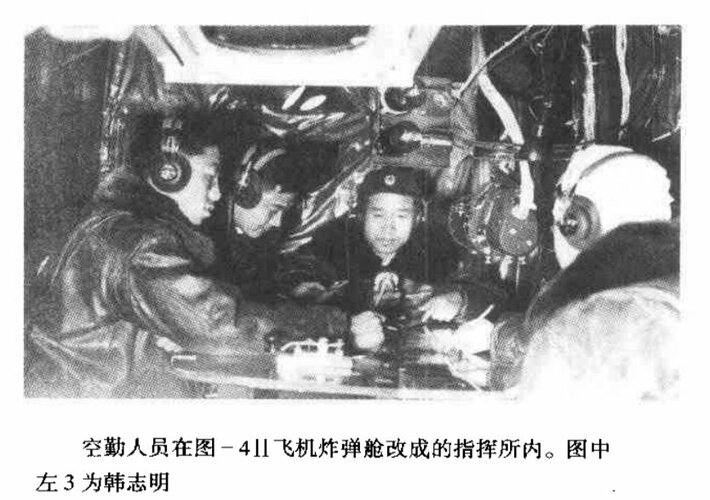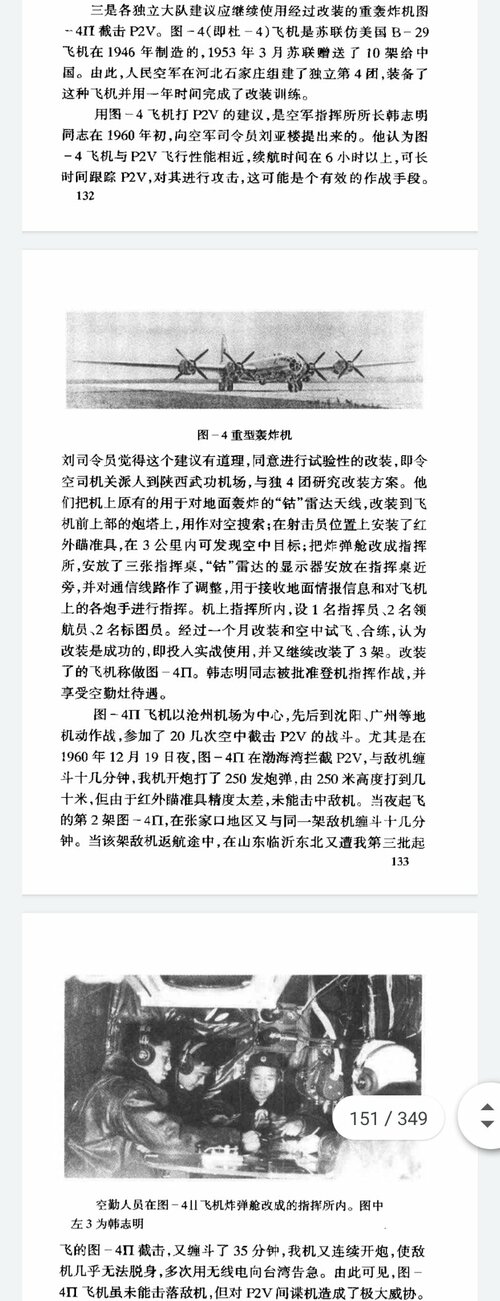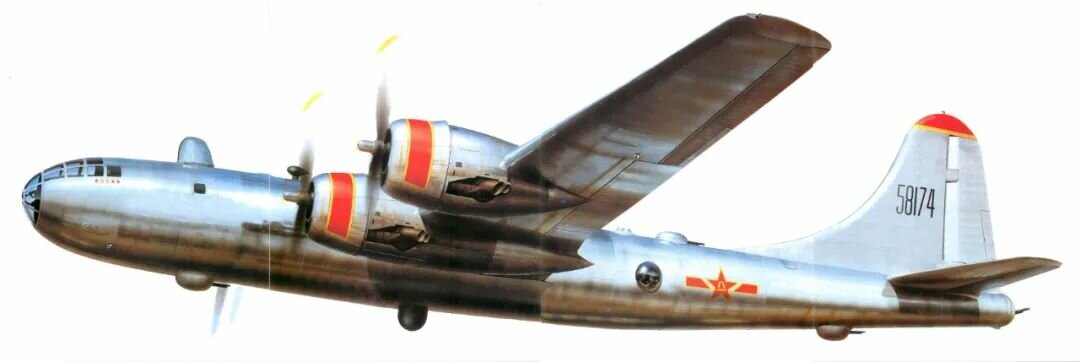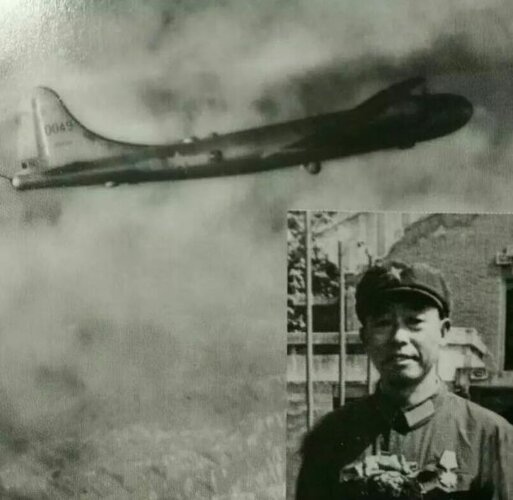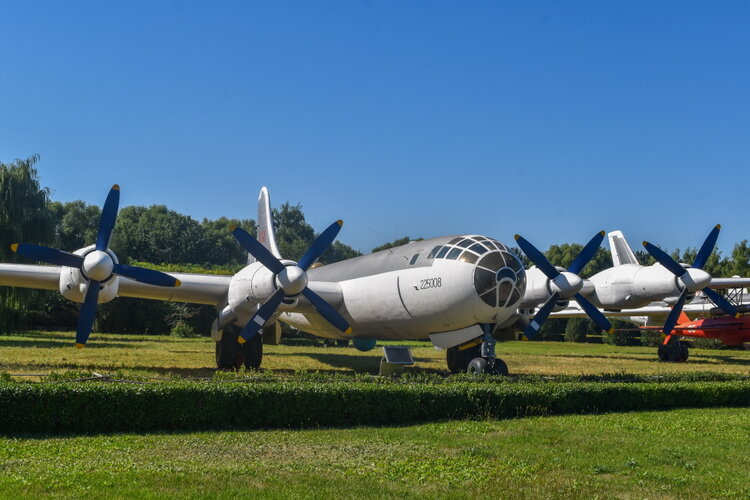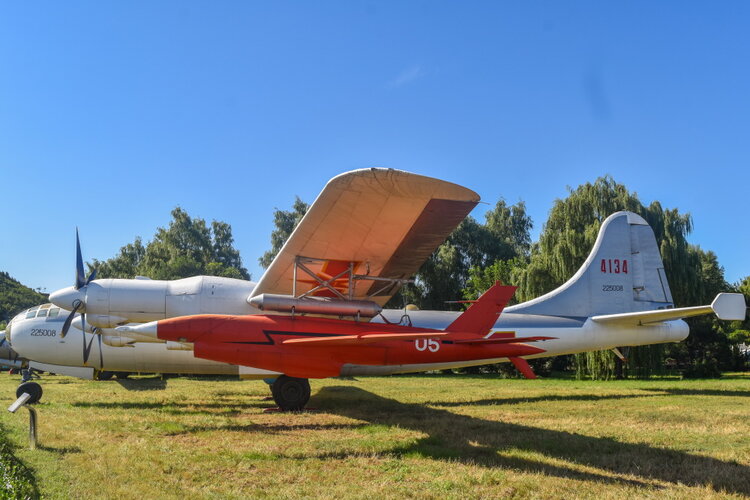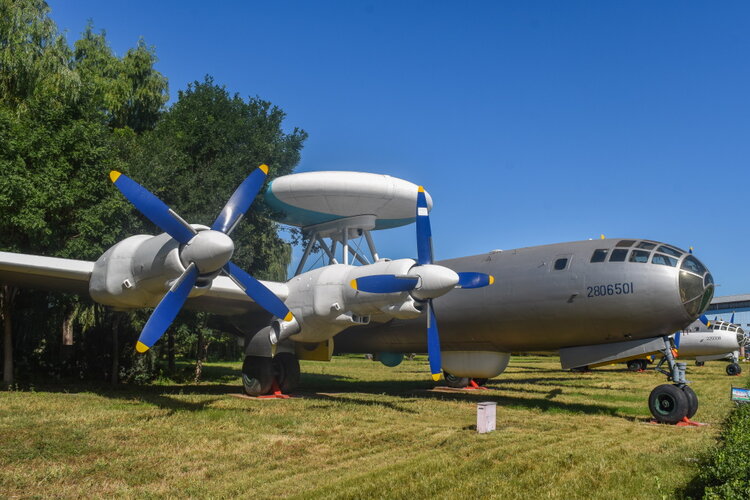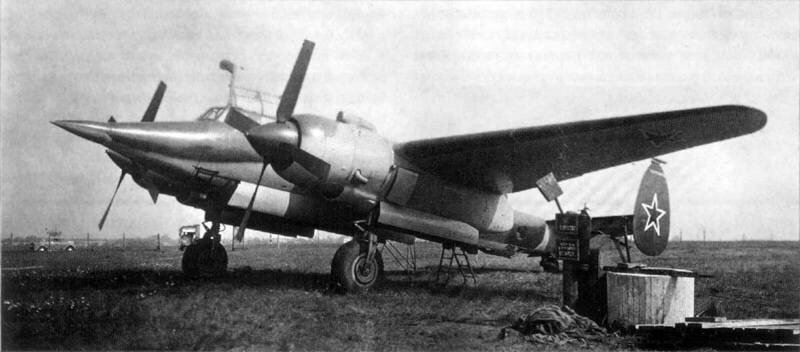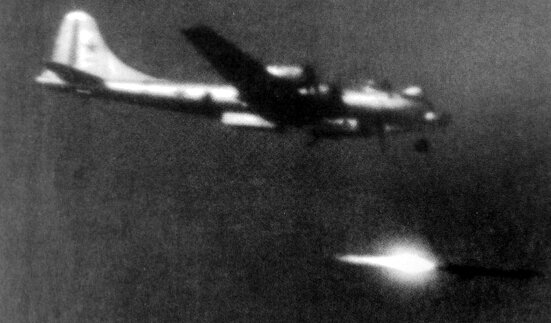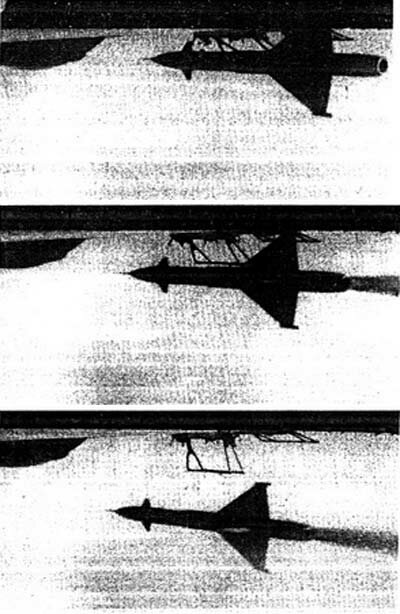Yeah, unfortunately Global Security has been giving me problems like that recently. The problem is that there are few other English language articles that I could find.
There are not references on that page, only the following two but about the Tu-4 in a general way:
- Bolger, Daniel P. Reluctant Allies: The United States Army Air Force and the Soviet Voenno Vozdushnie Sily 1941-1945, CHICAGO UNIV IL January 1985, ADA169037
- "A History of Strategic Arms Competition 1945-1972" (U), Volume 3, A Handbook Of Selected Soviet Weapon and Space Systems, United States Air Force, June 1976. pgs 82 and 85
The following three pages on Global Security site are related to the Tu-4 night fighter (also with no references):
Tu-2 Dive Bomber / Night Fighter
The Tu-2 dive bomber, also used as a light bomber and reconnaissance plane, was an exceptional Soviet aircraft of World War II. The first airplanes entered combat in July 1941, but mass production was delayed until the end of 1943. By the end of the war the Tu-2 had proved itself in variety of different operational roles. The aircraft was successfully used against Japanese troops in China and later by the Soviet and Chinese Air Forces during the Korean War in 1950-1953. The Korean War was the last major war to witness the deployment of piston aircrafts. The Soviet Yak-9 fighters and Tu-2 bombers frequently appeared in the skies above the battlefield in support of Northern forces.
At that time, although the Mig-17 had night flying capability, the intercept range was too short. Regardless of whether the fuel tank was full on takeoff, soon after the MiG pilot took off, surely the fuel mass indicator made a sound warning that the fuel was low. This sound made the pilot anxious while in pursuit of enemy airplanes. Sometimes even before the target was discovered the goal, the fuel indicator had already started to report an emergency.
Therefore the Continental air command urgently needed a long night flight combat aircraft. In June 1958, the Continental air command installed RG-5 the radar on the Tu-2 bomber aircraft. When intercepting the low altitude Kuomintang airplanes, its cruise endurance may be up to 8 hours.
The Tu-2 airplane's shortcomings is that it is a slower aircraft. China implemented a a distributed deployment of the radar equipped Tu-2 at airports in vital areas, such as Jiangxi Xiangtang, Jiangsu Shuo, Zhengzhou and other places. However this attempt to use the Tu-2 to intercept the P2V-7U was not successful. The re-equipped Tu-2 night fighter had a detection range of less than 10 kilometers with th RG-5 radars, can only make an azimuth of 60 degrees scanning to the front. But the P2V-7U actually had an early-warning APS-20 radar that could scan 360 degrees azimuth, and had a moving target indicator that could show a moving target in the background clutter. The ASP-20 had a 105 kilometers range for low target detection. The detection range and scope of both the target and clutter detection capability of the Tu-2 were less favorable than the P2V-7U, and the Tu-2 maximum speed was only 547 km per hour, while the P2V-7U had a maximum flight speed of 556 km per hour. The technical indicators for the completion of the task made it very difficult to intercept. In the five years from 1959 to 1964, the Tu-2 night fighters did not obtain any victory.
On the dark night of 19 November 1960, a pair of Tu-2 took off from Henan Zhengzhou to intercept the P2V-7U from Anhui, but one crashed into Mt. Songshan. The reason is RG-5 the radar does not have the means to discriminate the mountain and the target, but on the P2V-7U APS-20 radar can actually see clearly the mountainous region, and found the route to detour around the mountain. At that time P2V-7U adopted the tactic flying straight to the mountain peak, then following the terrain to leap around the mountain peak. The pursuing Tu-2 could not distinguish clearly the mountain from the airplane.
When this P2V-7U returned from the Sanmen Straits, the other Tu-2 RG-5 radar detected it. Because of their relative positions, the two airplanes approached to within 1 kilometer but the P2V-7U was not discovered. Because it was excessively near, at that time the ground P-3 meter-wave radar was already unable to differentiate the target and Tu-2, as the two signals folded nearly in the same place. Therefore the ground control ordered the ground-to-air units to shoot blindly. The intense muzzle flash blinded the pilot, who was unable to see clearly and crashed into thee mountain. One P2V-7U caused two Tu-2 night fighter aircraf to crash, because the RG-5 radar performance was inadequate.
Anti-KMT Air Defense - Ground Radar-Guided Interceptors
Mainland China's early AEW aircraft plans originated from the interception and combat of the Kuomintang Air force. Starting from March 1951, mainland China encountered a night airplane invasion from the American and Taiwan Kuomintang air forces. For two years before 1954 the activity invaded the mainland's airspace and moved nearly unimpeded. At that time mainland China's air defense system was in the initial period, the existing air defense had many blank areas, and did not have ability to prevent the Kuomintang's night flights from making harassing attacks. Even the day intercepts of the Kuomintang airplane's invasion was also a very difficult matter, since the PRC lacked the equipment for continental air command.
The interception is air defense combat's main style, but the success of intercept is mainly decided by early warning and direction. In not having early-warning aircraft, ground radar provides the early warning and the direction information most important. In the early years of the new nation the Republic had only a very few radars. The first batch of Soviet metric-wave medium range radars was received before 1950, and the Continental air command's ground-based radar used the American service pattern radars. These meter-wave radar's security guidance was a range of about 150 kilometers, with an error of position of approximately 2 kilometers. Battled several times Because the meter-wave radar position error is big, although it can guide the fighter aircraft to the target proximity, in the complex weather or at night, the fighter pilot is unable to use the naked eye.
By 1956 the People's Air Force was equipped wtih the Mig-15 and the Mig-17 day fighter aircraft, which had a main dependence on radar control, but carried on search and combat with the naked eye. This interception tactic is very difficult forthe pilot and such personnel were few, and before 1956 the night flight fighter pilots were scarce. This condition caused Taiwan Kuomintang airplane's invasion to go on repeatedly. In 1955, the People's Air Force set out 246 interception sorties against Taiwan airplanes, but only some 20 pilots discovered the targets, a few fired their guns, but none had any victory. These difficulties in combat caused the People's Air Force to diligently and unceasingly strengthen radar and electronic equipment, to change the disadvantageous situation.
In 1956, the mainland started to introduce from Soviet Union the P-20 three coordinate radar to equip the army. The P-20 radar has two antennas and has the PRV-11 height-finding radar's distant early warning radar system. An antenna is the S wave band, another antenna is the L wave band, and surveys the high-altitude target at distances to above 300 kilometers, the cover area is much bigger than earlier radars. The P-20 itself only provided the position and distance to the target, but the target was highly determined by the PRV-11 radar, with analog computation system.
This kind of radar had another very useful performance, the ability to access other external P-type displays. The display can be placed in the range of 40 km from the radar station, which makes the fighter command center at the airfield see the situation and direct the air battle, greatly improve the response speed. Because this kind of radar overcame the meter-wave radar big error shortcoming, when guiding the fighter aircraft to close with the target, often it can guide precisely to pilot's visual range. Simultaneously equips the people's air force with P-20 the radar also to have is loaded with radar's Mig-17 fighter aircraft. From 1956 to 1957, the people's air force depended upon the introduction of 23 sets of the P-20 radar, and the massive P-3 radars, constituted directly along Taiwan, and had the radar fence which jumped very greatly. Soon, the P-20 radar demonstrated good operational effect.
On the night of 22 June 1956 one of Taiwan's B-17 reconnaissance aircraft was intercepted by a Mig-17 day fighter aircraft when the armed force'ss P-20 radar guided successfully it to the visual range for the first time. Because Taiwan reconnaissance aircraft needed good visibility weather, these airplane's invasions were generally carried on the bright moonlit night, which was also advantageous to the people's air force's interceptions. On the 22 June night combat, because P-20 could the accurate determination of the B-17's accurately determine the heading, altitude and location, the Mig-17 pilot was able to discover under the moonlight B-17 outline at a range of 9 kilometers. Afterwards on 22 August in night operation, although is the gibbous moon, near the Shanghai Hongqiao Airport the P-20 similarly guided a Mig-17 day-fighter aircraft to the target within 800 meters. The Mig shot down the US military's P4M-1Q electronic intelligence aircraft, which formerly was impossible to achieve using the P-3 radar. In the same year on the night of 10 November, the P-20 radar at Hangzhou once more guided the day Mig-17 fighter aircraft to shoot down a Kuomintang's C-46 transport aircraft.
On the night of 13 March 1958 a Taiwan B-17G airplane was intercepted by a MiG-15bis fighter, a process carried out by the radio relay in Changsha, and 2 hours later, a Mig-17 fighter aircraft pursued B-17G, but it flew out from the coast too far, and in landing Leizhou Peninsula Airport, the MiG crashed due to poor weather. Hereafter they were not able to shoot down the Kuomintang intruder until May 1959.
The ground-based radar had all sorts of inconveniences, but was at that time the Chinese weak industrial foundation was not able to develop early-warning aircraft. The people's air force proposed to install an air search radar on a large aircraft, by no means an early-warning aircraft, but a kind of night operation's but only a night, long-endurance aircraft operations. Although the night air defense fighter obtained some successes, the battle command and flight are very complex.
The Kuomintang changed to the P2V-7U electronic intelligence aircraft after 1960, and the air defense combat situation was even more difficult to intercept. Because this kind of airplane has installed the ASP-20 acquisition radar as well as at that time the very advanced electronic reconnaissance system, depending upon the ground-based radar and the fighter aircraft was very difficult to carry on the interception.
J-5A / MiG-17PF Night Fighter
The J-5A aircraft was based on the Soviet all-weather interceptor MiG-17PF. It differed from the basic J-5 by the addition of a radar, a bigger and longer forward fuselage section and relocation of systems and components in the fuselage. Fifty per cent of the parts in the J-5A were new.
Initially the mainland air command could only carry out night operation's with Mig-17 airplanes with radar. According to Soviet Union's operational control regulations, when under ground control, the fighter aircraft flies to the predetermined interception air zone, and the airplane's radar is not intended to intercept the target. After closing to a certain distance from the target, the pilot only then turns on the radar to carry on the search.
At that time the Mig-17 interceptor radar was the RG-5. The biggest difference with the installation of the RG-5 radar's on Mig-17 was the nose air inlet upper lip and the air intake middle partition board. The RG-5 radar's search antenna on the air intake upper lip and the acquisition radar cover caused the airplane to seem like the shark mouth, but in the air intake partition board had the circle distance-measuring radar antenna cap. When the ground radar control guided the fighter aircraft to within 10 kilometers of the target, the ground director would inform the pilot to turn on the radar scanner. The RG-5 radar's maximum search range was only 10 kilometers, and the distance-measuring radar's range for interception was only 4 kilometers. In the sunny daytime this kind of radar was less capable than the pilot's naked eye visual range, but at night and under adverse weather conditions it was actually very effective, particularly when there was no moon light.
When a jet aircraft intercepted a high-speed target, the ground director and the pilot coordinated to cause the fighter interceptor to turn on the radar as near as possible to the target, in order to avoid warning the target. When the acquisition radar surveyed the target, and came within 4 kilometers, the pilot switched to the targeting range finder, and opened fire about 700 meters into the direction from the light, pressed down the trigger to open fire to hit the target.
The western nation only then detected this kind of radar signal in 1953 off Norway in the nearby Barents Sea air zone, when the Soviet Union's Mig-17 fighter aircraft locked US's reconnaissance aircraft with this kind of radar, the RG-5 radar had a 2000 hertz repetitive pulse frequencies. In the American reconnaissance aircraft receiving device, the installed loudspeaker transformed into the devil bass-horn "... Woo ... oh ... oh ...". This kind of sound was the NATO reconnaissance aircraft pilot's nightmare. To the NATO flying crews in the 1950s Cold War nighttime sky, it meant that formidable missile and artillery firepower of the fighter aircraft was aimed nearby. In 1957 Taiwan Kuomintang and US's reconnaissance aircraft detected this kind of radar "singing in praise of the Buddha" off the Fujian coast. For some two months they reduced the mainland reconnaissance flights, but resumed the flights soon thereafter.
The American reconnaissance aircraft played a cat and mouse game with in the Soviet Air force fighter aircraft, and discovered the interception radar's problems. It was discovered early on that the RG-5 the radar a problem that below 1000 meters it cannot be used to detect the Japan-based P2V reconnaissance aircraft. In 1954 the implementation of night reconnaissance missions it was very easy to shake off the Soviet Soviet MiG-17 fighters by decreasing flight altitude. The reason is that the RG-5 the radar beam has a 14 degree angle of view. When the Mig-17 turns on the radar below an altitude of 1000 meters, the wave beam will illuminate the ground to form massive terrain feature clutter. The ground clutter submerged the signal. But this was the only kind of air-to-air interceptor the Continental air command could use.
J-5A prototype production was assigned to the Chengdu Aircraft Factory by the MAI in May, 1961. The Shenyang Aircraft Factory sent a professional team consisting of technical people in different disciplines to Chengdu to help with the J-5A prototype production, specifically production preparation, parts manufacturing, assembly and flight test. They also provided a set of master tooling and production tooling for the J-5. The assistance sped up prototype production. A complete set of drawings for production was completed by the Chengdu Aircraft Factory in September 1962, component manufacture started in March, 1963, and final assembly in June, 1964. The full size static test was completed in September of the same year.
The first flight of the J-5A prototype (02) took place on November 11, 1964 at Yanliang Xi'an. It flew for 30 minutes and all systems operated normally. All flight tests were completed by the end of November and the aircraft operational and tactical performance was approved. It was certificated for mass production by the Military Products Certification Commission in December. Prototype production took 3 years and 3 months.
The J-5A was put into mass production in 1965. The delivery of this all weather fighter provided the military services with a new weapon which could counter the enemy aggression at night.


